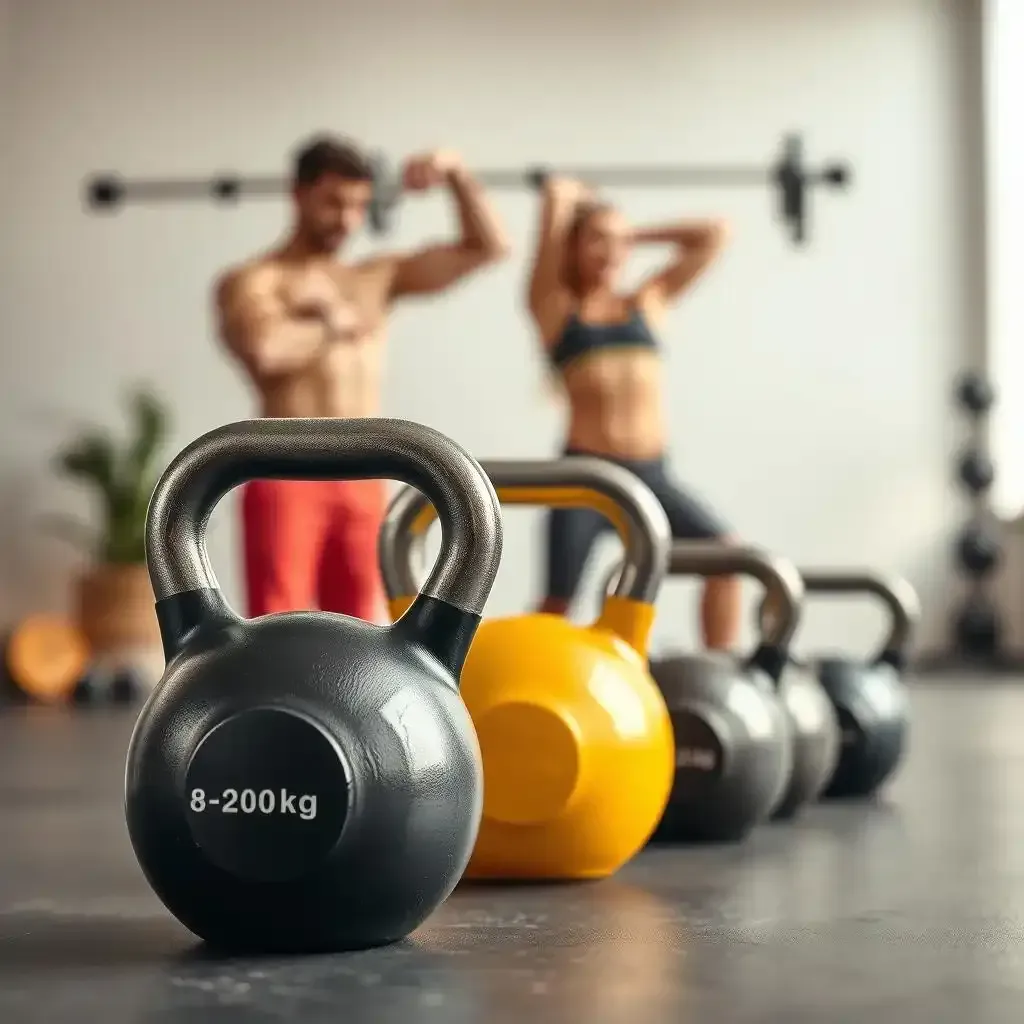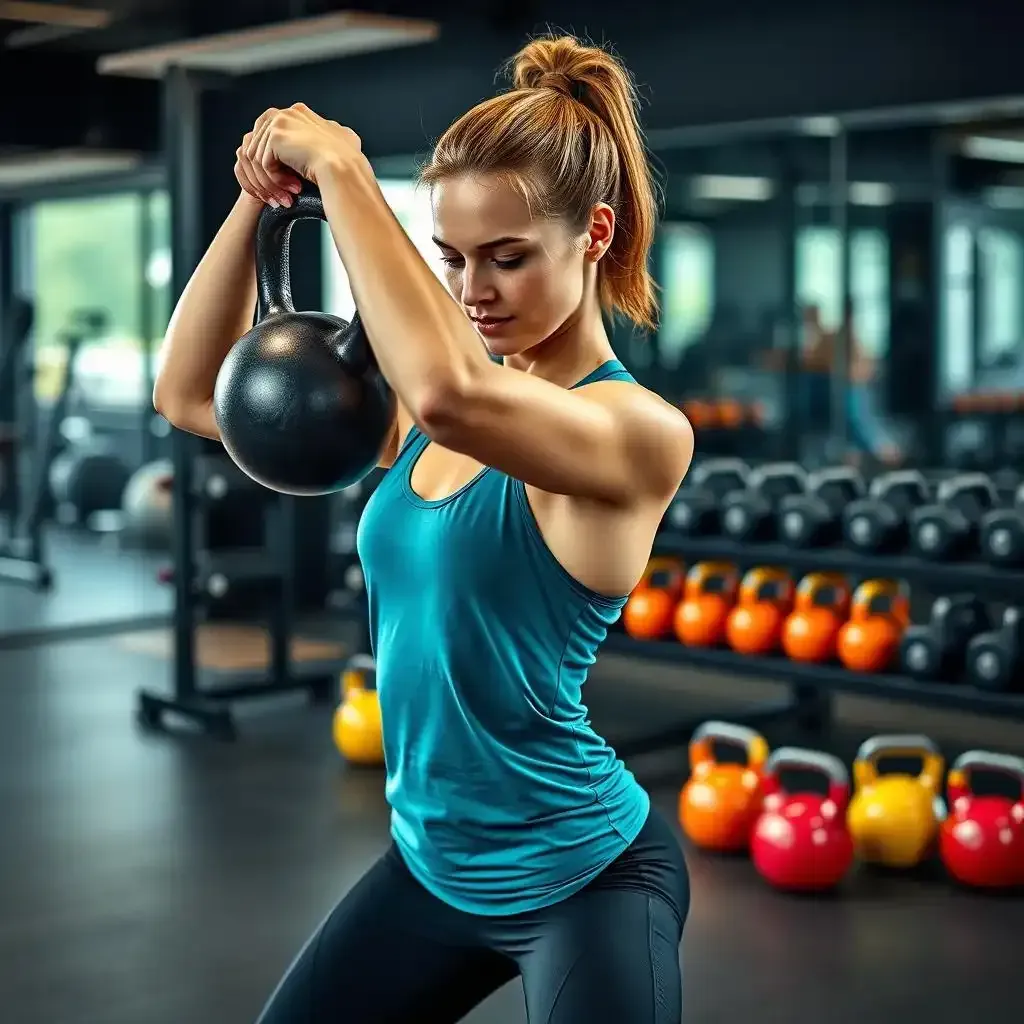Table of Contents
Kettlebell workouts are a game-changer when it comes to building strength, strength, and cardiovascular fitness. Whether you're a beginner or an advanced fitness enthusiast, kettlebells offer a versatile and effective way to target all the muscles in your body. At kettlebellworkout.homes, we're passionate about helping you achieve your fitness goals through efficient and engaging workouts. In this article, we'll guide you through the essentials of kettlebell workouts for full-body fitness. From choosing the right weights to structuring your workouts and exploring advanced techniques, we've got you covered. Let's investigate in and transform your fitness progression with kettlebells!
Kettlebell Workouts for Full Body: Essential Exercises and Techniques

Kettlebell Workouts For Full Body Essential Exercises And Techniques
Kettlebell workouts are an incredible way to build strength, strength, and cardiovascular fitness while targeting all the muscles in your body. As a kettlebell enthusiast, I'm excited to share with you the essential exercises and techniques to get you started on your full-body kettlebell process!
When it comes to kettlebell workouts, variety is key. You want to include a mix of exercises that work different muscle groups, such as squatting, hip-hinging, pressing, rowing, and rotational movements. This will ensure you're working your entire body and avoiding plateaus.
Exercise | Muscle Group | Description |
|---|---|---|
Kettlebell Squat | Legs, Glutes, Core | Hold the kettlebell with both hands and perform a squat, keeping your back straight and knees behind your toes. |
Kettlebell Swing | Glutes, Hamstrings, Core | Hold the kettlebell with both hands and swing it back between your legs, then up to chest height, using your hips and legs to generate strength. |
Kettlebell Press | Chest, Shoulders, Triceps | Hold the kettlebell with one hand and press it straight up over your head, then lower it back down to the starting position. |
Remember to always warm up before starting your kettlebell workout, and to listen to your body and adjust the weight and intensity based on your fitness level and experience. For more information on kettlebell workouts and exercises, check out our Kettlebell Exercises Starter guide.
Another important aspect of kettlebell workouts is choosing the right weight. The American Council on Exercise (ACE) recommends the following kettlebell weight ranges for adult males and females, depending on strength training experience:
- Beginners: 8-12 kg (18-26 lbs) for men, 4-8 kg (9-18 lbs) for women
- Intermediate: 12-16 kg (26-35 lbs) for men, 8-12 kg (18-26 lbs) for women
- Advanced: 16-20 kg (35-44 lbs) for men, 12-16 kg (26-35 lbs) for women
Choosing the Right Kettlebell Weights for Your FullBody Workout

Choosing The Right Kettlebell Weights For Your Fullbody Workout
Finding Your Sweet Spot: Weight Selection for Beginners
Picking the right kettlebell weight is like finding the perfect pair of shoes – you want something comfortable enough to wear all day, but supportive enough to keep you going strong. For beginners, I recommend starting with lighter weights. Think of it as a warm-up for your muscles. You don't want to start lifting something so heavy you injure yourself, before you even start! A good starting point for most women is a 8-12kg (18-26 lbs) kettlebell, while men might find a 12-16 kg (26-35lbs) kettlebell more suitable. Remember, it’s always better to start lighter and work your way up. We want you to feel successful, not defeated.
Don't get discouraged if you can't do as many reps as you think you should be able to do. Focus on proper form over the number of reps. This will prevent injuries and help you build strength faster. Check out our kettlebell basics guide for more detailed information on proper form. It’s all about building a strong foundation, not about showing off!
Experience Level | Recommended Weight (Men) | Recommended Weight (Women) |
|---|---|---|
Beginner | 8-12 kg (18-26 lbs) | 4-8 kg (9-18 lbs) |
Intermediate | 12-16 kg (26-35 lbs) | 8-12 kg (18-26 lbs) |
Advanced | 16-20 kg (35-44 lbs) | 12-16 kg (26-35 lbs) |
Level Up: Choosing Weights for Intermediate and Advanced Kettlebellers
Once you’ve mastered the basics and feel comfortable with your current weight, it’s time to challenge yourself! Gradually increase the weight of your kettlebell to continue building strength and improving your fitness. Think of it as climbing a mountain – you wouldn’t start at the peak, would you? You start at the bottom and slowly work your way up! For intermediate users, consider increasing the weight by 2-4 kg (5-9 lbs). Advanced users can increase their weight by 4-6 kg (9-13 lbs).
Remember, it's not just about the number you see on the kettlebell; it's about how your body responds. If you're struggling to maintain proper form, it's a sign you need to decrease the weight. Listen to your body! It's your ultimate guide. For more tips on choosing the right kettlebell weight, check out our kettlebell weight guide. It's packed with advice and strategies to help you progress safely and effectively.
- Start light and gradually increase weight.
- Prioritize proper form over heavier weights.
- Listen to your body – it’ll tell you what it needs.
Structuring Your Kettlebell Workouts for FullBody Results

Structuring Your Kettlebell Workouts For Fullbody Results
Structuring your kettlebell workouts is like building a house. You need a solid foundation, sturdy walls, and a strong roof to make it all work. When it comes to full-body kettlebell workouts, think of it as building a fortress of fitness. Here’s how you can do it.
First, you need a solid warm-up. Think of it as priming the pump. A good warm-up gets your blood flowing and your muscles ready for action. Spend 5-10 minutes doing some dynamic stretches and light cardio. This will help prevent injuries and get you in the zone. For more tips, check out our warm-up exercises.
Warm-Up Exercises | Description |
|---|---|
Arm Circles | Rotate your arms in large circles, 10 reps each direction. |
Leg Swings | Swing one leg forward and backward, 10 reps each leg. |
Jumping Jacks | Perform 20 jumping jacks to get your heart rate up. |
Next, structure your workout in a way that hits all major muscle groups. Kettlebell exercises are versatile, so you can mix and match to create a balanced routine. For example, you could start with a kettlebell swing to work your posterior chain, then move to a kettlebell press for your shoulders and upper body. Follow that with a kettlebell squat for your legs and glutes. Each exercise should flow into the next, like a well-choreographed dance.
Don’t forget to incorporate some core work. A strong core is crucial for stability and strength. Kettlebell twists and Russian twists are great for this. You can also add in some kettlebell Turkish get-ups, which are a full-body exercise that requires a lot of core engagement. For more on core exercises, check out our core exercises guide.
- Kettlebell Swings: 10-15 reps
- Kettlebell Press: 8-12 reps
- Kettlebell Squats: 10-15 reps
- Kettlebell Twists: 10-15 reps each side
- Kettlebell Turkish Get-Ups: 3-5 reps each side
Finally, consider the intensity and duration of your workouts. High-intensity interval training (HIIT) with kettlebells can be a great way to burn fat and build endurance. For example, you could do 30 seconds of intense kettlebell swings followed by 30 seconds of rest. Repeat this for 10-15 minutes. For a more moderate approach, aim for 3-4 sets of each exercise with a 30-60 second rest between sets. Both methods are effective, so choose what works best for you. For more on HIIT, check out our HIIT routines.
Remember, consistency is key. Regularly changing your routine can help prevent plateaus and keep your workouts fresh. So, mix things up, try new exercises, and keep challenging yourself. With a well-structured kettlebell workout, you’ll be on your way to a stronger, more fit you in no time!
Advanced Tips and Variations for Kettlebell Workouts for Full Body
Boost Your Workouts with Kettlebell Complexes
Kettlebell complexes are like the superhero of full-body workouts. They combine multiple exercises into one continuous flow, keeping your heart rate up and your muscles engaged. You can think of them as a series of moves strung together, like a dance routine but with weights.
For example, you might start with a kettlebell clean, then move into a kettlebell press, followed by a kettlebell front squat, and finish with a kettlebell snatch. Each exercise flows into the next, creating a high-intensity, full-body workout. Check out our for more high-intensity ideas.
- Clean and press
- Front squat
- Snatch
The key to kettlebell complexes is consistency. Aim to complete each movement with speed and precision. It’s like a well-choreographed dance routine, where each step is crucial to the overall performance. Remember to focus on form and breathe naturally throughout the sequence.
Push Your Limits with AMRAP and EMOM Workouts
AMRAP and EMOM are two acronyms that can transform your kettlebell workouts. AMRAP stands for "As Many Rounds As Possible," while EMOM stands for "Every Minute On the Minute." These techniques are perfect for pushing your limits and creating a challenging, dynamic workout.
AMRAP involves setting a designated time, say 20 minutes, and trying to complete as many rounds of a circuit as possible within that time. It’s a great way to measure your progress and keep things exciting. For example, you could do 10 kettlebell swings, 5 kettlebell snatches, and 10 kettlebell squats, and see how many rounds you can complete in 20 minutes. Check out our for more AMRAP ideas.
Exercise | Reps |
|---|---|
Kettlebell Swings | 10 |
Kettlebell Snatches | 5 |
Kettlebell Squats | 10 |
EMOM, on the other hand, involves performing a specific set of exercises at the start of each minute. For example, you could do 5 kettlebell swings, 3 kettlebell snatches, and 5 kettlebell squats, and then rest until the next minute starts. This method keeps you on your toes and ensures you maintain a consistent pace. For more on EMOM, check out our .
Both methods are excellent for building endurance and increasing your overall fitness. They keep your workouts interesting and help you break through plateaus. So, next time you feel your routine getting a bit stale, try an AMRAP or EMOM session and see where it takes you. Happy lifting!
Final Thought
Kettlebell workouts for full body are not just a trend; they are a proven method for building strength, ability, and endurance. By incorporating a variety of exercises, choosing the right weights, and structuring your workouts effectively, you can achieve remarkable results. Whether you're just starting out or looking to take your fitness to the next level, kettlebells offer a versatile and engaging way to reach your goals. So, grab a kettlebell and get ready to transform your fitness trip with kettlebellworkout.homes. Happy lifting!